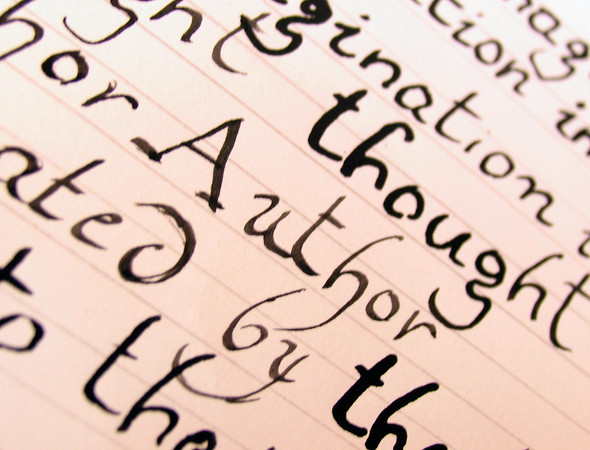The Whys and Hows of Paraphrasing
Posted: October 16, 2012
 You want to tell your story, something that's important to you and you feel strongly about. You've found someone else who feels exactly the same way you do, and they've put it into words. Don't be tempted to "borrow" their words without permission or attribution. Instead, learn the necessary art of paraphrasing.
You want to tell your story, something that's important to you and you feel strongly about. You've found someone else who feels exactly the same way you do, and they've put it into words. Don't be tempted to "borrow" their words without permission or attribution. Instead, learn the necessary art of paraphrasing.
 You want to tell your story, something that's important to you and you feel strongly about. You've found someone else who feels exactly the same way you do, and they've put it into words. Don't be tempted to "borrow" their words without permission or attribution. Instead, learn the necessary art of paraphrasing.
You want to tell your story, something that's important to you and you feel strongly about. You've found someone else who feels exactly the same way you do, and they've put it into words. Don't be tempted to "borrow" their words without permission or attribution. Instead, learn the necessary art of paraphrasing.
Paraphrasing, rewording of spoken or written content, is a necessary skill for every writer. This post discusses the purposes of process of paraphrasing.
Why Paraphrase?
Quoting directly without attribution is plagiarism, an offense against those responsible for crafting the original message. In a scholarly setting, it constitutes academic dishonesty, which when committed by students is punished with a failing grade, suspension, or expulsion; it also compromises their future in academia. In the case of faculty or academic researchers, it signals a lack of integrity and can ruin one’s career.
Even with attribution, however, extensive direct quotation in course assignments or in scholarly research is discouraged; some sources recommend that no more than 10 percent of an academic paper or article consist of exact wording from a research source. In both trade books and scholarly publishing, the same benchmarks seems appropriate; journalism is more accepting, but direct quotation consisting of more than 25 percent of an article (except in the case of a question-and-answer interview) is likely to be regarded as excessive.
Why should paraphrasing predominate? The purpose of academic writing is not to exactly reproduce the findings and interpretations of others; it is to report findings and interpretations and produce commentary on them, extrapolate and evaluate, and make new inferences, as well as to synthesize multiple sources. Therefore, academic writing should summarize the work of others, reproducing content verbatim only when a strikingly original conclusion, or a statement that should be clearly attributed as exact wording, merits inclusion in the secondary work.
In journalistic writing, quotations often add color and vibrancy to an article. Precise reproduction of some of a subject’s or source’s comments conveys the person’s character and personality or lends authority. However, just as with scholarly prose, direct quotation should be the exception, not the rule; the reporter’s task is to describe an event or issue or to create an impression for readers who were not present during an incident or an interview.
Paraphrasing also allows reorganization of sources’ or subjects’ statements — not in order to manipulate the comments with the intent to mislead, but to improve the narrative flow or place randomly uttered thoughts in coherent chronological order. This technique also enables writers to impart information that is valuable or integral but was not expressed well.
How to Paraphrase
Paraphrasing is simple: Read a passage from a source, or examine your notes from an interview, and imagine you’re sharing the information with others — which is exactly what you’re doing. Strive to find a simpler, more direct way to describe what you’ve read; it’s acceptable to use the same word now and then, and you may occasionally employ partial direct quotations to reproduce key phrases, but always remember that your goal is to report, not reproduce. And though you may consider the source content better stated than what you can produce, be confident that your paraphrase will be good enough.
 Biz Tip Provided by DailyWritingTips
Biz Tip Provided by DailyWritingTips